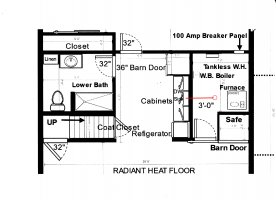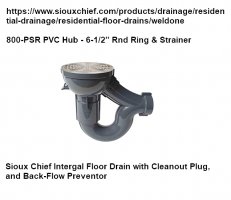Hello, planning a new home with a basement mechanical room, in which I would like to have an "emergency" floor drain. The mechanical room will also have a domestic water heater and a condensing HVAC furnace, which I presume will need some way of collecting and discharging of the water. Additionally, the mechanical equipment will include a Lochinvar Indirect hot water system for whole house radiant floor heat. So I believe a floor drain would the solution to collect condensate from the equipment described above.
I am not finding any reference to this in any of the codes... Outside of ICC-901 which requires traps to be vented? Would a 2" floor drain with integral trap and back-flow device (as in the 2" PVC Integral Trap Floor Drain w/ Backwater Device -- like a Sioux Chief 802) be what I should consider, and will it be code compliant and NOT require a vertical vent?
There just does not seem to be much information regarding floor drains (and a venting requirement). The mechanical room floor drain would most probably be the lowest sewage connected device in the home. The sewage system will be a septic system with a dosing system requirement (pumped to the leaching field). The proposed floor drain will be part of the under-slab rough-in plumbing and connected to the main run that connect to the two chambered septic tank. The home will be located int Tennessee.
I am not finding any reference to this in any of the codes... Outside of ICC-901 which requires traps to be vented? Would a 2" floor drain with integral trap and back-flow device (as in the 2" PVC Integral Trap Floor Drain w/ Backwater Device -- like a Sioux Chief 802) be what I should consider, and will it be code compliant and NOT require a vertical vent?
There just does not seem to be much information regarding floor drains (and a venting requirement). The mechanical room floor drain would most probably be the lowest sewage connected device in the home. The sewage system will be a septic system with a dosing system requirement (pumped to the leaching field). The proposed floor drain will be part of the under-slab rough-in plumbing and connected to the main run that connect to the two chambered septic tank. The home will be located int Tennessee.


